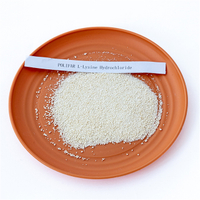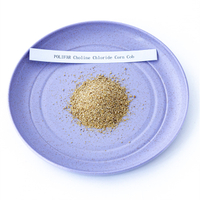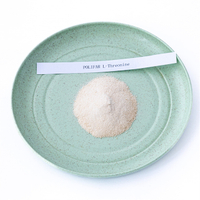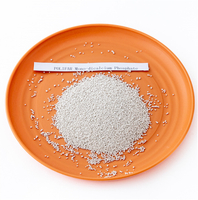Views: 2 Author: Site Editor Publish Time: 2019-11-06 Origin: Site








In recent years, livestock and poultry farmers have developed rapidly. Captive livestock, especially caged poultry, have frequent micronutrient deficiencies and need to be supplemented in the form of trace element feed additives. Although the trace element feed does not contain energy, it has a close relationship and a huge influence on the metabolism of energy-producing proteins, carbohydrates, fats, etc., and is essential for ensuring the health, growth and development of livestock and poultry. This article will specifically describe the information on trace elements.
The following points will be described:
What trace elements are there?
The role of these trace elements
Trace element deficiency performance
There are many types of feed-grade trace elements, and there are more than 20 kinds of feedstocks, mainly iron, copper, cobalt, zinc, iodine, manganese, and selenium. The various trace element feed cannot be converted or replaced with other substances. Even if there is sufficient protein, fat and carbohydrate in the diet of livestock and poultry, if it lacks trace elements, it will affect the healthy growth, reproduction and production performance of livestock. When there is a serious lack or long-term lack of supplementation, it will cause illness and even death. Therefore, the role of trace element feed is no less than the role of nutrients such as protein, fat and carbohydrates. However, due to the small amount of trace elements required by livestock and poultry, it is often neglected and caused losses.
Trace element-containing feed plays an important role in metabolism and is an important structural substance in livestock and poultry. Calcium and phosphorus trace element feeds are the main components that make up bones and teeth. Phosphorus is contained in livestock and poultry organs and participates in every biochemical reaction in livestock and poultry. Hammer, sputum, copper, iron, sputum, diamond and other elements are the auxiliary groups or hormones of the enzyme and play an important role in the physiological activities of livestock and poultry.
Trace element feed can regulate body fluids, keep the intracellular fluid, lymph and blood osmotic constant, and ensure that cells get the necessary nutrients to maintain life activities.
Maintain blood acid-base balance. Inorganic salts (bicarbonate and phosphate) are important buffer substances in the blood.
Trace elements can affect the solubility of other substances in livestock and poultry. The paving and chlorine trace element feed is a raw material for forming gastric juice and stomach acid, and can promote the activity of digestive enzymes, so that the feed becomes soluble and the feed utilization rate is improved. Because it has a catalytic effect on the enzyme of the digestive juice, it can improve the digestive effect, and can improve the palatability of the diet and increase the appetite of the livestock.
Iron is present in the enzymes of hemoglobin and tissue cells. When iron-containing iron trace elements are insufficiently fed, young animals, lactating piglets are prone to anemia and poor absorption of various tissues. Iron and copper are involved in the formation of hemoglobin, and iron is poorly absorbed in the absence of copper in the feed.
When copper is insufficient, it can also cause anemia. The hair of the livestock and poultry is rough, and the wool exhibits reduced bending and reduced yield. Even if the calcium and phosphorus content in the livestock and poultry is normal, the lack of trace element feed copper will also affect the normal development of the bones of the livestock and poultry. The young birds and bones are easily broken, and the joints are swollen and inflamed. The forelimbs of the cattle are bent and caught. Lambs often suffer from loss of pulp. In addition, the animal estrus is not normal.
When the feed containing cobalt trace element feed is insufficient, the ruminants show extremely weak constitution and lack of energy, and the milk production of the cows is reduced.
The deficiency of selenium occurs mainly in areas where selenium is absent from the soil. The province lacks nitrite pots in most parts of the Northeast. Various young animals grazing or captive are prone to self-myopathy and muscle atrophy. The main symptoms are liver dysfunction, fat yellow staining, muscle fiber swelling, edema, and sometimes sudden death.
Iodine is closely related to thyroid functioning. Insufficient chess can cause swelling of the thyroid gland of livestock and poultry and damage health. Newborn pigs, chicks or coats are scarce, weak, lack of vitality, and low survival rate. Adult livestock and poultry grow poorly.
Manganese is rarely found in livestock and poultry, but is widely distributed in bone, hair, liver, membrane, kidney and muscle tissue. When the content of manganese in the diet of weaned piglets is insufficient, the piglets not only have poor appetite, but also the skin will be inflamed, with typical focal changes, the hairs fall off, the skin surface is rough and damaged, and the limbs are shortened and thickened. In chicks, there are not many feathers and the amount of manganese in the pig diet should be 50 mg of compound feed per kg.
Zinc is associated with bone marrow growth and livestock reproduction and nerves. When the zinc trace element feed is insufficient, the bone and ankle joints of the livestock and poultry are deformed, the development is abnormal, the limbs are bent, and the pathological changes of the bone tissue are most obvious. Head deformity, neck edema, and abdomen protruding. Chicks suffer from soft foot disease. In the case of zinc deficiency in chickens, the eggshell is thin, and the laying rate and hatching rate are reduced.
Although trace elements are rare, they play an important role in animal animals. It is an element that promotes animal life activities and cannot be ignored. If you want to make poultry grow up healthily, you must learn to use various trace element feeds.
content is empty!






